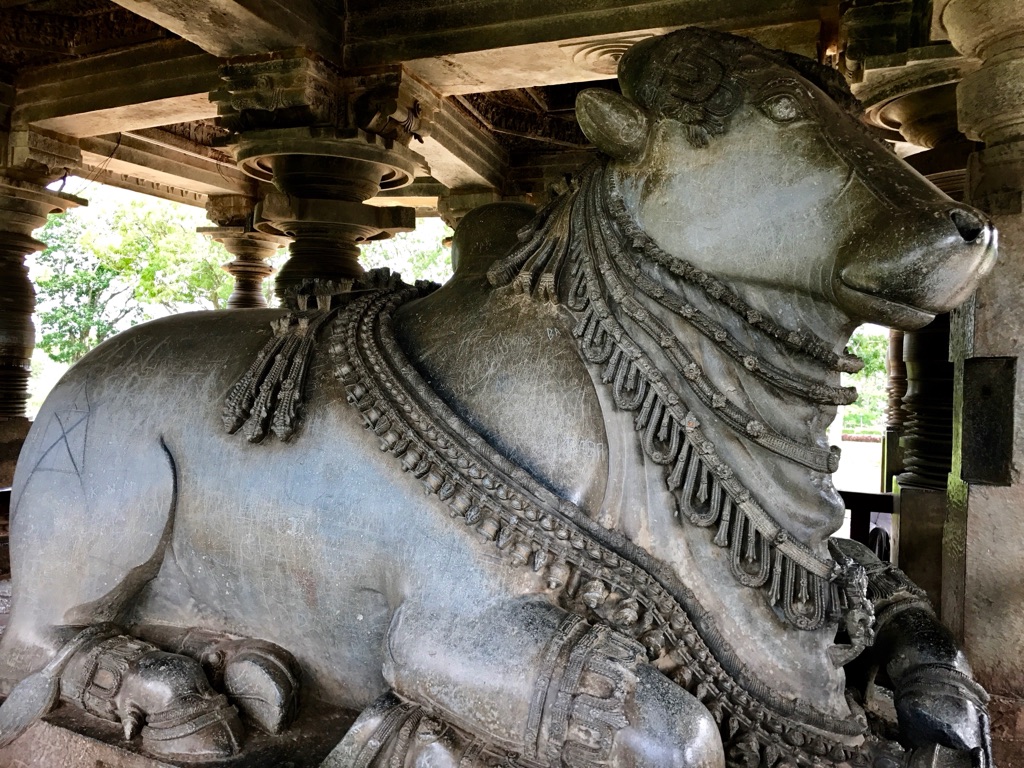The Hoysaleswara temple is a stunning example of Hoysala architecture from the 12th century. Located in Halebidu, Karnataka, India, it was dedicated to Lord Shiva. The temple is renowned for its intricate sculptures and detailed carvings. It stands as a testament to the skill and artistry of the Hoysala craftsmen. The temple’s construction began around 1121 CE and continued for several decades. Despite its incomplete status, it remains a significant heritage site and a masterpiece of Indian art.
Hoysala Empire
The Hoysala Empire, flourishing between the 10th and 14th centuries AD, was a significant and vibrant kingdom in the Deccan Plateau of South India. Originating from the Malenadu region in modern-day Karnataka, the Hoysalas initially served as vassals to the larger Chalukya Empire before rising to prominence under the leadership of King Vishnuvardhana in the early 12th century. This marked the beginning of a golden era for the empire, characterized by remarkable achievements in art, architecture, and governance.
Under the rule of King Vishnuvardhana, who reigned from 1108 to 1152 AD, the Hoysala Empire expanded its territories significantly, asserting its dominance over parts of present-day Karnataka and Tamil Nadu. Vishnuvardhana’s conversion to Vaishnavism marked a pivotal moment in the religious landscape of the empire, fostering a rich tradition of temple construction and patronage of the arts. The Chennakesava Temple at Belur, a masterpiece of Hoysala architecture, stands as a testament to this period of cultural renaissance.
The Hoysalas were ardent patrons of both Jainism and Hinduism, with the latter seeing a more pronounced emphasis as the empire evolved. The construction of grand temples dedicated to Shiva and Vishnu, adorned with intricate sculptures and carvings, reflected the empire’s religious fervor. These architectural marvels, including the Hoysaleswara Temple at Halebidu, not only served as places of worship but also as cultural hubs that showcased the artistic and engineering prowess of the Hoysalas.
Social and daily life in the Hoysala Empire was marked by a high degree of sophistication and organization. Agriculture was the backbone of the economy, supported by advanced irrigation techniques and a well-structured land revenue system. Trade flourished both within the empire and with distant lands, facilitated by a network of well-maintained roads and marketplaces. Education and the arts thrived under royal patronage, with the empire becoming a center for Sanskrit and Kannada literature.
The Hoysala military prowess was another cornerstone of their success, enabling them to defend their territories against invasions and expand their empire. The use of cavalry and skilled archers, along with strategic fortifications, played a crucial role in their military strategy. Notable battles, such as the ones against the Cholas and the Pandyas, underscored the empire’s resilience and strategic acumen.
The decline of the Hoysala Empire began in the early 14th century, precipitated by repeated invasions from the Delhi Sultanate. The final blow came in 1343 AD when the Vijayanagara Empire, rising in power to the north, annexed the Hoysala territories. Despite their fall, the Hoysalas left behind a rich legacy of art, architecture, and governance that continues to be celebrated today.
The lineage of Hoysala rulers is marked by notable figures such as King Ballala II, who reigned from 1173 to 1220 AD and is remembered for his administrative reforms and military campaigns that further solidified the empire’s power. The role of women in the Hoysala court was also significant, with Queen Shantala Devi, wife of King Vishnuvardhana, being an influential figure in her own right, known for her patronage of the arts and her devout Jainism.
In conclusion, the Hoysala Empire stands as a beacon of medieval South Indian history, showcasing a remarkable blend of military prowess, architectural genius, and cultural richness. Its legacy, immortalized in stone and literature, continues to captivate historians and art enthusiasts alike, offering a window into the vibrant life and times of one of India’s most illustrious kingdoms.

